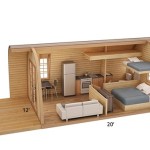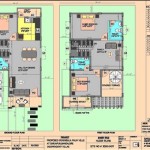Super Insulated House Plans: Essential Aspects
Super insulated house plans are becoming increasingly popular due to their energy efficiency, cost savings, and environmental benefits. These homes are designed to minimize heat loss and gain, resulting in a comfortable and cost-effective living space.
Key Features of Super Insulated House Plans
- High-Performance Insulation: Super insulated homes use thick layers of insulation to reduce heat transfer through walls, ceilings, and floors.
- Airtight Construction: Air leakage can account for significant energy loss. Super insulated homes are meticulously sealed to prevent air from escaping or entering the house.
- Thermal Bridge Reduction: Thermal bridges are areas where heat can easily flow between different materials, such as around windows and doors. Super insulated homes minimize these thermal bridges through careful design and construction.
- High-Efficiency Windows and Doors: Windows and doors are potential sources of heat loss. Super insulated homes use high-efficiency models that minimize thermal transfer.
Benefits of Super Insulated House Plans
- Energy Efficiency: Super insulated homes can reduce energy consumption by up to 70%. This translates to lower utility bills and a smaller carbon footprint.
- Comfort: Consistent temperatures throughout the house, regardless of the weather, ensure a comfortable living environment.
- Durability: The robust insulation and airtight construction protect the home from moisture and extreme temperatures, extending its lifespan.
- Financial Savings: Lower energy costs and reduced maintenance expenses over the long term result in significant financial savings.
Considerations for Super Insulated House Plans
- Construction Costs: Building a super insulated home may have higher upfront costs due to the use of specialized materials and construction techniques.
- Ventilation: Proper ventilation is crucial to prevent moisture buildup and ensure indoor air quality. Super insulated homes require careful consideration of ventilation systems.
- Sun Exposure: To maximize solar heat gain and reduce heating costs, consider the orientation of your house and the location of windows.
- Professional Design: Designing a super insulated home requires expertise to ensure optimal performance. Hire an experienced architect or contractor specializing in energy-efficient construction.
Conclusion
Super insulated house plans offer numerous advantages, including reduced energy consumption, increased comfort, durability, and financial savings. By incorporating key features like high-performance insulation, airtight construction, and thermal bridge reduction, these homes create a sustainable and cost-effective living solution. If you prioritize energy efficiency and environmental consciousness, considering a super insulated house plan is an investment in your future comfort and well-being.

Superinsulation Wikipedia

Superinsulated House Architect

Passive Homes Sierra Sustainable Builders

Superinsulation Wikipedia

Details For Foam Free Superinsulated Construction Jlc

Passive House Thermal Insulation

Plan Search Natural Element Homes Tiny House Floor Plans Small

Six Proven Ways To Build Energy Smart Walls Fine Homebuilding

Passive House Thermal Insulation

Sustainable Building Passive House Craft Homes








